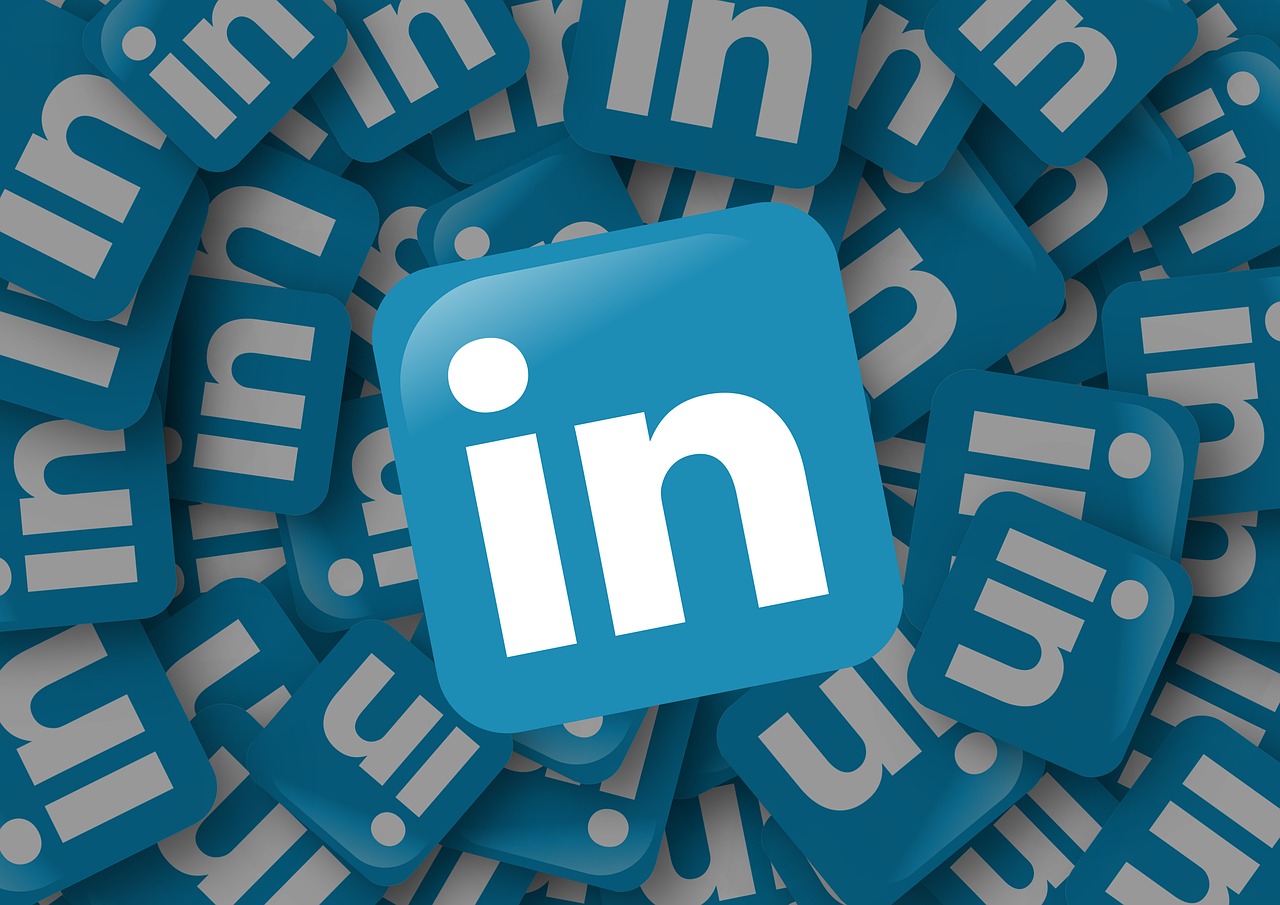
LinkedIn has come a long way since they started advertising avenues on its platform. If you want to promote your product or services to B2B professionals, LinkedIn Ads should be your go-to channel. In this guide, I’ll show you why LinkedIn Advertising is worth it with noteworthy statistics and how much LinkedIn Ads cost. I will also list down the different types of LinkedIn Ads, and answer all your questions about LinkedIn Video Ads.
You will find LinkedIn ads different from other social media advertising platforms like Facebook, mainly because of LinkedIn’s B2B targeting options. And this is LinkedIn’s biggest selling point.
This is probably the first question you as an advertiser would’ve asked yourself before deciding to invest in LinkedIn Ads.
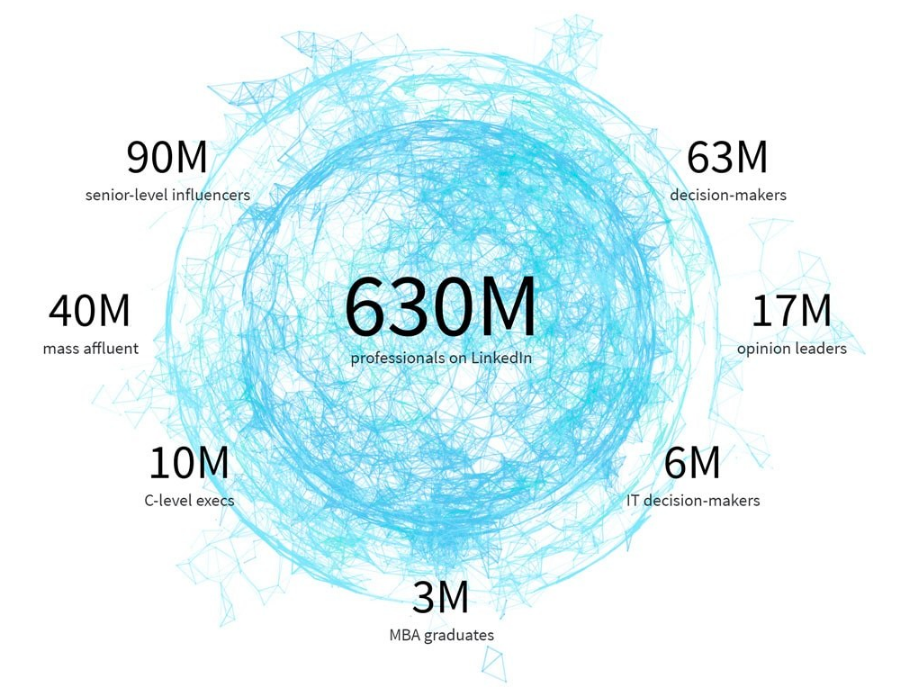
Just like most ad platforms, you need to participate in an auction for a target audience where your bid will be pitted against advertisers targeting the same audience as you. After that, you need to select a pricing model – either CPC (cost-per-click) or CPM (cost-per-thousand-impressions), and then you can set your own budget and schedule your ads on LinkedIn.
The first step is to decide what goals or objectives you want to achieve with your LinkedIn Ad.
The different objectives available are:
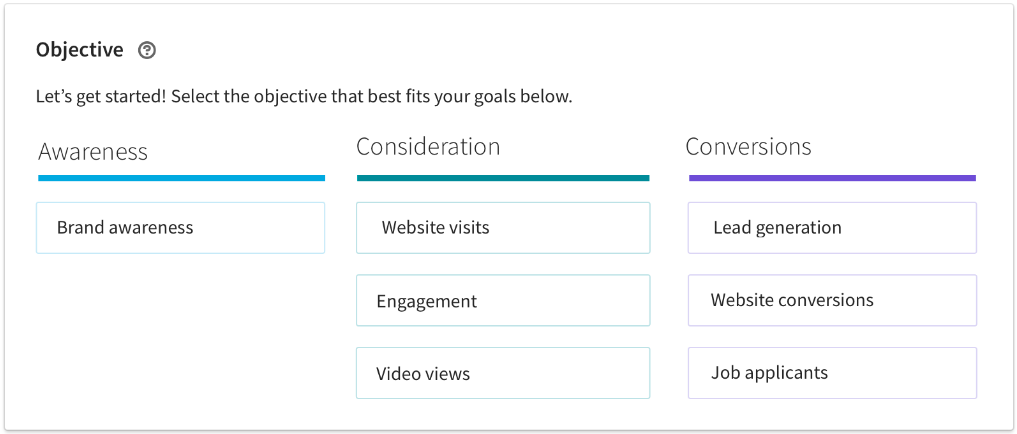
The next step is to select a target audience for the goal you have decided. Job Seniority describes the rank and influence of a member’s current role in their organization. This option is determined by a member’s job title.
If you want to reach out to those who influence buying decisions in their companies, you should create a target audience based on seniority.
| Job title | What it means |
| Owner | Has full or near-full ownership of an organization |
| Partner | Has substantial partial ownership of an organization |
| CXO | Has leadership responsibilities for the entire business function within an organization |
| Vice President | Executive management position that has leadership responsibilities for one particular business function or unit |
| Director | Multi-functional management position that has leadership responsibilities for multiple groups of individuals |
| Manager | Positions that have leadership responsibilities for a single group of individuals |
| Senior Individual Contributor | Individual contributor positions that do not have direct reports but have leadership responsibility, advanced knowledge, and do not require immediate guidance |
| Entry | Individual contributors that do not have direct reports, no leadership responsibility, no advanced expertise and contribute without immediate guidance |
| Training | Students, interns and trainee positions that need immediate guidance to individually contribute |
| Unpaid | Includes volunteer positions and positions that do not refer to a job |
To help you get a better grasp at the whole targeting piece of LinkedIn Advertising, here is an example:
Alexis is a marketer in the tech industry who works at a small to mid-sized company with marketing-related skills such as demand generation, SEO, social media, and project management.
There are 4 different types of campaign you can run to reach out to an audience like Alexis.
Campaign 1: You will target people like Alexis based on Job Function and Seniority. You will pick Marketing, Media & Communications as the Job Function, and Senior, Manager, Director, VP, CXO, Partner, and Owner as the Seniority.
Campaign 2: You will set up this campaign to target people like Alexis based on Company Industry and Company Size. You will pick Computer Software, Internet, Computer Hardware, Marketing and Advertising, and Information Technology and Services as the Company Industry, and
exclude 201-500, 501-1000, 1001-5000, 5001-10,000, 10,000+ from the Company Size.
Campaign 3: In this campaign, you will target people like Alexis based on Job Function and Skills. You will select Marketing, Media & Communications as the Job Function, and Digital Marketing, Lead Generation, Demand Generation, Social Media Marketing, Content Marketing, Online Marketing, Web Marketing Strategy, Email Marketing, Social Media, SEM, SEO, Marketing Automation, Integrated Marketing, and Google Analytics as the Skills.
Campaign 4: You will target people like Alexis based on the LinkedIn Groups they are a part of. This will include groups like Marketing Pros – Largest Marketers Group: Digital Inbound Social Media Content, Search Email SEO Jobs, Tech Jobs: Telecoms, Developer, IoT, Cloud, Digital Marketing, and B2B Technology Marketing Community.
You can also build a target audience group for your retargeting efforts using LinkedIn Ads. Retargeting helps you bring users back to your website to increase user engagement and drive product usage.
The final step is to place bids so that your ad is shown to the audience you have selected. You can use the following filters to pick a target audience on LinkedIn:
If you’re just getting started with LinkedIn Ads, you can select some of their preset Audience Templates. Using these you can pick target key audiences such as Recent Graduates, Event Planners, Millenials, Doctors, and more, instead of doing it manually. You can also save your own Audience Templates for future use.
Tip: Combine the ‘Job Function’ option with the ‘Seniority’ option to include decision-makers with specific expertise or skills in your target audience.
Like Facebook or Twitter, there are multiple types of Ads on LinkedIn that you can use to ensure your message reaches the right audience.
You can run native ads (or Sponsored Content) on LinkedIn to raise awareness, increase leads, and nurture relationships at every stage of your sales cycle.
Sponsored Content can be viewed by LinkedIn users on both desktop and the native mobile app.
LinkedIn native ads are of several different types:
These are image posts on LinkedIn that you can put money behind and promote it to an audience of your choice.
You can also use videos as creatives for your ad copies, and use LinkedIn Video Ads reach out to your target audience.
Content is at the heart of a successful video ad campaign. You need to make different video content to achieve different marketing goals and objectives. The best way is to keep your video concise, visually compelling, and mainly focus on the storytelling to drive your point home.
Before you get down to creating videos, identify your objective to ensure that your video ad aligns with the type of goal you want to achieve. Here are the key content types for each objective.
For brand awareness and consideration:
For conversion:
? Here are some best practices to create LinkedIn Video Ads.
Using Lead Gen Forms, you can collect high-quality leads from your Sponsored Content. These forms get pre-filled with the data of the user who interacts with it, letting them send you their professional info with just a few clicks.
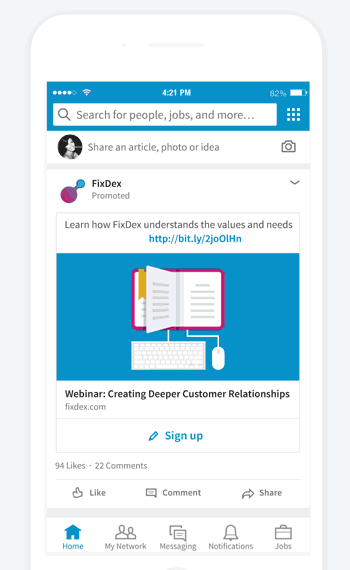
You can track your campaigns’ cost per lead, the lead form fill rate, and the number of leads you’re getting from specific audience segments.
Carousel ads on LinkedIn are interactive. Your target audience can scroll through a collection of images and take action. Note that each image can have its own accompanying text.
This is really useful if you have multiple products for sale on your e-commerce store. Tech Saas companies can also use Carousel Ads to showcase their features or user testimonials to increase the click-through rate (CTR).
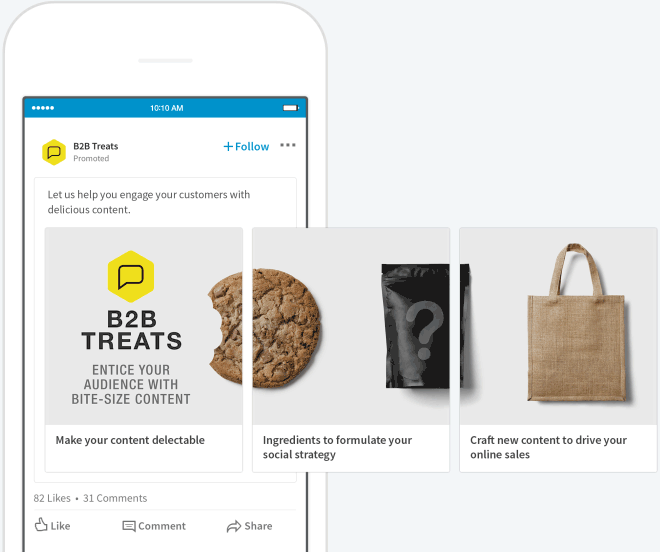
As a LinkedIn user, you get access to your own personal inbox. This is where you can send messages to your LinkedIn connections and followers.
By opting for a Sponsored InMail campaign, you as an advertiser can send personalized ads to your target audience’s LinkedIn inbox.
Since LinkedIn users can access their inbox on both mobile and desktop, your Sponsored InMail messages can also be opened on both mobile and desktop.
Note that Sponsored InMail messages are only delivered when the user is active on LinkedIn.
The cost of running advertisements on LinkedIn depends on the following factors:
There are three pricing models for LinkedIn Ads:
Before wrapping this guide up, I will cover the best specs, sizes, and dimensions of the different types of LinkedIn Ads.

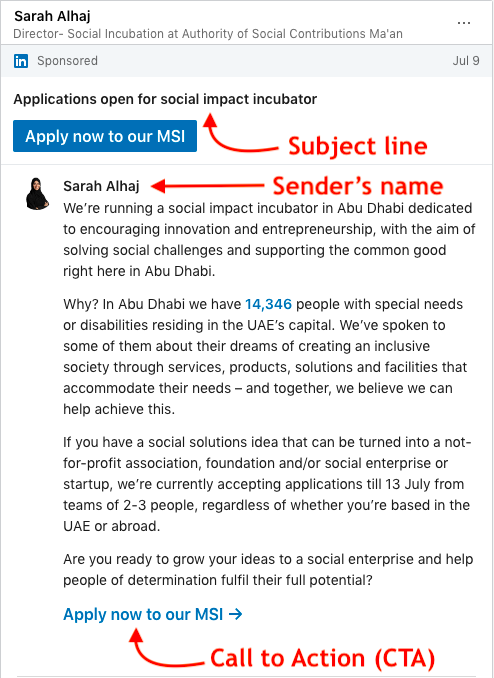
If you’ve reached this far, I’m positive you know everything you need to get started with LinkedIn Ads.
To recap, I recommend you use LinkedIn to promote content, drive traffic to your website, increase webinar attendees, improve website conversions, and to get more job applications.
Since LinkedIn is the largest platform for professionals to connect and read high-quality content, it is highly possible that your ad reaches the decision-maker of your target company easily.
If you’re looking for a nifty tool to help you create video ad creatives at scale, check out Rocketium. If you have any questions, feel free to drop a comment below!